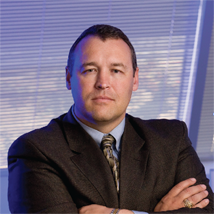From the IRA to Black September; from The Jackal to Osama bin Laden; from Munich to Lockerbie to New York City, on Pan Am, Air India and American Airlines; in English subways, Afghani markets and U.S. office buildings: terrorism, especially since 2001, has changed the globe.
on Pan Am, Air India and American Airlines; in English subways, Afghani markets and U.S. office buildings: terrorism, especially since 2001, has changed the globe.
Its effects may be as dramatic and tragic as suicide bombings in the Middle East, or as purely maddening as bag searches and limping air travel.
It has its own gangs that make the Cripps and Bloods look like a day care: Shining Path, Hezbollah, Tamil Tigers, FARC. They learned from legends such as Maxmilien Robespierre, Che Guevara and Pol Pot.
It’s carried out for religion, territory and power; from the Inquisition to the American Revolution to Stalin’s Great Purge.
Simply put by Oxford, terrorism is “the systematic employment of violence and intimidation to coerce a government or community in acceding to specific political demands,” and it has spawned a new industry: the study of the who and why behind the atrocities.
One such body of work, the American Terrorism Study, a landmark document penned for the FBI and the U.S. Congress, has a Canadian connection: it was coauthored by Lethbridge College alumnus Kelly Damphousse (Criminal Justice ’82).
Damphousse began studying terrorism in 1994 at the University of Alabama at Birmingham. With colleague Brent Smith, he created the study of cases from 1980 to the present time; Damphousse serves as the associate director of the project, which has created a database of individuals charged as the result of a terrorism investigation by the federal government.
Damphousse and Smith set out to examine terrorist activities on American soil to determine patterns of behaviour and tactics; and how to best secure convictions against those apprehended.
“Certainly, terrorism has existed for years,” says Damphousse. “You only have to consider the Oklahoma City bombing in the U.S. or the FLQ situation in Canada in 1970. But those were fleeting and North America wasn’t thinking much about the phenomenon.
“I was mugged once in Brazil, and I was terrified. But that was just a criminal act. A legal definition of terrorism must include an ideological motivation.”
After examining some 2,500 criminal counts by 400 terrorists representing 50 terrorist groups, Damphousse and Smith concluded: “Terrorism, once the scourge of Europe, the Middle East and Latin America has finally established a foothold on American soil.”
“Bombings at the World Trade Centre in New York, the Murrah Federal Building in Oklahoma City and at the Olympics in Atlanta forced America to confront terrorism face to face,” they said. “Equally as sobering were governmental responses at Ruby Ridge, Idaho and Waco, Texas that called into question America’s motives and preparedness for responding to dissident and terrorist groups.”
They noted while the size of home-grown terrorist groups has dropped in recent years, there are more of them. They’ve also shifted their organizational strategy from the military hierarchy of leftist extremists 40 years ago, to the “uncoordinated violence” of today’s right-wing terrorists.
Whether from the left or the right, the groups pursue unique agendas. Left-wing extremists dream of changing the system with which they disagree. Only 32 per cent are white and more than half have post-secondary degrees with a tendency to have professional careers in an urban environment. Right-wingers often seek a return to their former way of life before civil rights. More than 97 per cent are white and many are unemployed or impoverished with a rural background.
From radical white supremacist groups, like Aryan Nations; Covenant, Sword and Arm of the Lord; White Patriot Party and Phineas Priesthood, to left-leaning groups like Puerto Rican separatists Macheteros, El Rukns (a Chicago street gang linked to Libya), New African Freedom Fighters, and the Animal Liberation Front, each follows its own path, but all are united by their violent means.
It would also appear right-wing defendants are far more likely to plead not guilty and, unlike earlier days, refuse to testify against their brethren.
“The parade of right-wing extremists who testified against other members of right-wing terrorist conspiracies in the 1980s has been replaced with the silence of extremists like [Timothy] McVeigh, [Terry] Nichols, and the so-called ‘Phineas Priests’ bombers in Spokane, Washington; Ohio and Pennsylvania,” says the Damphousse-Smith study.
The authors contend prosecutors have greater success against right-wing terrorists by damping down the issue of terrorism and focusing instead on the criminal acts involved.
“Prosecutors want [juries] to know that these defendants have attracted the attention of the FBI’s Counterterrorism Program. . . but they don’t want too much of a good thing,” they write. “Allowing the trial(s) to be subverted into a debate about religious or political beliefs has sidetracked many a jury.”
Today, says Damphousse, there have been few terrorist attacks in the U.S. since 9/11, thanks to increased vigilance by authorities and the public. Still, terrorism, once carried out almost exclusively by a country’s insurgents against its leaders, has now jumped borders and time zones.
Damphousse notes the media, since 1970, has become a player in the role of terrorism. Events such as the bombings in Madrid and London were carried out specifically for the media’s attention.
“The media can’t ignore these incidents or they wouldn’t be doing their job,” says Damphousse. “It’s a role they can’t avoid; they have to report the news and describe why it occurred. But I think they are becoming more aware of their role. In some cases, such as the Unabomber (Ted Kaczinski), the media has actually helped authorities capture the perpetrator.”
Terrorism is extremely difficult to counter, says Damphousse, and never fought on a level playing field. Canada is learning that in its efforts to defeat the Taliban in Afghanistan.
“Revolutions can be very successful and difficult for a regular army to fight,” he says. “Every July 4, we celebrate that fact in the U.S.”
Knowledge and understanding of terrorists groups and their strategies provides one weapon in that fight. From his first experience taking the Criminal Justice program at Lethbridge College to earning a PhD at Texas A&M University, Damphousse’s journey has led him to being a major contributor to developing that knowledge.


